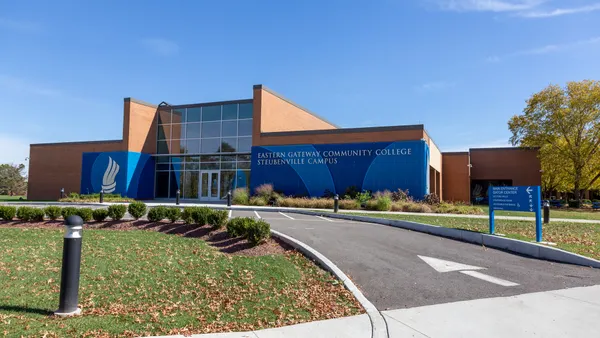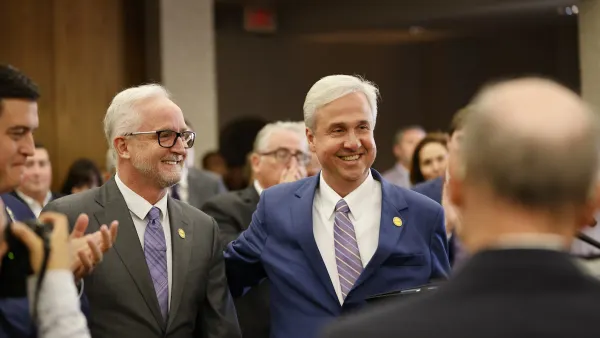Dive Brief:
- The University of Northern Colorado plans to lay off about 50 staff members in early November and eliminate roughly 30 vacant roles, CFO Dale Pratt said during a town hall last week.
- The layoffs come as the university tries to close a projected $7 million budget shortfall for fiscal 2026 and shrink its scale to meet lower enrollment levels. The job eliminations are expected to save $8 million to $10 million annually, or up to 7.5% of its personnel expenses.
- Signaling that layoffs were on the horizon earlier this month, university President Andy Feinstein pointed to unexpected reductions in state funding, lower-than-anticipated revenue from enrollment, inflation and historically low employee turnover.
Dive Insight:
Many of the University of Northern Colorado’s financial woes stem from enrollment that is shrinking faster than expenses. Between 2018 and 2023, the public institution’s fall headcount fell by nearly a third, to 9,067 students.
Following the pandemic, officials had expected a rebound in enrollment that has yet to materialize, Pratt said. Meanwhile Feinstein said the university is still optimistic that growth lies ahead given robust retention rates and other factors.
Even so, its student body is likely to remain smaller in the years ahead compared to the past. In his presentation, Pratt cited a note from S&P Global Ratings analysts arguing that the university’s financial health depended on its ability to scale down to meet a smaller student body going forward.
He also pointed to metrics showing that the university has more employees per student than nearly all other colleges in the state, and that its net operating results per student have been negative since fiscal 2023.
Going into the fiscal year, officials had a balanced budget drawn up for fiscal 2026, based in part on expected employee turnover and projected enrollment. Leaving jobs unfilled would have allowed University of Northern Colorado to save on costs without having to resort to layoffs, which leaders did consider when initially making the budget earlier this year, Pratt said.
But not as many employees left on their own as the university expected, with its turnover rate falling from 19.1% in June 2022 to 11.8% in June of this year, according to Pratt’s presentation. Just between 2024 and 2025, the turnover rate fell by 2 percentage points.
Moreover, Colorado lawmakers reduced the university’s funding for the current fiscal year by $550,000 to plug an unanticipated hole in the state budget, Pratt said.
An even bigger financial blow came as the new school year began. In the fall semester, 391 fewer students enrolled than the institution budgeted for, with an actual headcount of 8,443. That metric includes 119 fewer degree-seeking undergraduate students than anticipated, which Pratt described as especially worrisome.
“There were changes here that occurred that really caught us off guard,” Pratt said.
Although officials are still analyzing what exactly happened, Pratt pointed to the Trump administration’s aggressive approach to immigration and visas, including for international students, and the recent state budget cuts.
That translated into a dip in international enrollment at larger universities in the state, including University of Colorado and Colorado State University. However, to compensate for the declines, those institutions may have recruited and enrolled students that otherwise would have gone to the University of Northern Colorado, Patt and Feinstein said.
All of those factors combined to strain the University of Northern Colorado’s budget and pressure leaders to make cuts. Officials were still clearing the layoffs with the university’s legal and human resources offices at the time of the townhall, Pratt noted.
He also said that faculty positions would only be eliminated through vacancies or nonrenewals of contracts.
In addition to its workforce, the university plans to rein in spending on travel, professional development and services and supplies. It is also reviewing student wages and graduate assistantships.













